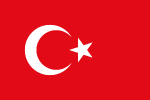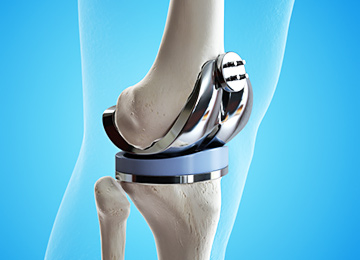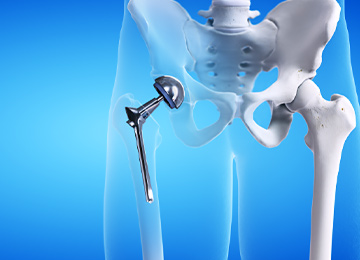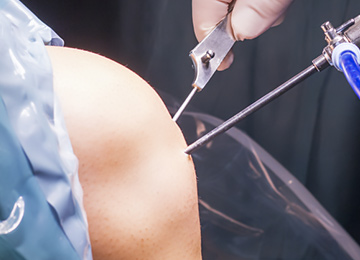Appointment and Information Form
Orthopedics and Traumatology Specialist Assoc. Dr. You can learn your questions or make an appointment by contacting Ata Can.
AREAS OF EXPERTISE
Knee arthroplasty
Knee arthroplastyIt is an important solution for people suffering from knee pain and limited mobility. Today, thanks to developing technologies, knee prostheses have become durable, comfortable and aesthetic. In this way, people can return to active life again.
Hip Prosthesis
hip replacementis a life-saving solution for people with hip pain and limitation. Thanks to developing technologies, hip prostheses provide more durable and natural mobility. In this way, people can regain their freedom of movement.
Arthroscopic Surgery
Arthroscopic surgeryIt is a minimally invasive method to treat joint pain and injuries. This surgery, performed with small incisions, provides less pain and faster recovery. Arthroscopic surgery is becoming more common thanks to the developing technologies of modern medicine.
Cruciate Ligament Rupture
Cruciate ligament ruptureIt is one of the most serious types of sports injuries and causes pain and limitation of movement. If left untreated, the risk of joint degeneration increases. Modern treatment options provide rapid recovery and strong rehabilitation.
Make an Appointment
You can make an appointment online by filling out the contact form.
Assoc. Dr. Ata Can
About
Assoc. Dr. Ata Can was born in Iran in 1973. He completed his primary and secondary education in Iran. He graduated from Pertevniyal High School in 1990.
He completed his medical education at Izmir Dokuz Eylül University Faculty of Medicine in 1996.
In 2001, he completed his Orthopedics and Traumatology Specialization from Cerrahpaşa Faculty of Medicine with his thesis on Pediatric Hip Fractures.
He worked at Eyüp SSK between 2001-2007, at Halk Bahat Hospital between 2007-2008, at Beylikdüzü Kolan Hospital between 2009-2010, and at NOMERK Nişantaşı Orthopedic Center from 2010 to the present. Dr. Nejat Güney and Prof. Dr. He works with Fahri Erdoğan.
Assoc. Dr. Ata Can
About
Assoc. Dr. Ata Can was born in Iran in 1973. He completed his primary and secondary education in Iran. He graduated from Pertevniyal High School in 1990.
He completed his medical education at Izmir Dokuz Eylül University Faculty of Medicine in 1996.
In 2001, he completed his Orthopedics and Traumatology Specialization from Cerrahpaşa Faculty of Medicine with his thesis on Pediatric Hip Fractures.
He worked at Eyüp SSK between 2001-2007, at Halk Bahat Hospital between 2007-2008, at Beylikdüzü Kolan Hospital between 2009-2010, and at NOMERK Nişantaşı Orthopedic Center from 2010 to the present. Dr. Nejat Güney and Prof. Dr. He works with Fahri Erdoğan.
Orthopedic Appointment
You can fill out our appointment form to make an orthopedic appointment.
Frequently asked Questions
In general, we may encounter conditions such as weakening, breaking or melting of bones due to age. The main causes of all these bone diseases are; nutrition, lifestyle and genetic history of the patient. We frequently encounter Symptoms of bone diseases:
- Pain in the joints
- Visible shrinkage of bones
- Redness or bruising on the skin surface where the bones are located
- Noise coming from bones while moving
- Curvatures and deformities in bones
- Bones breaking or falling out too quickly
- Disorders in the shape of healthy bone structure
We generally need a hip prosthesis as a result of hip calcification and hip deformations. Our patients come to us with pain and their quality of daily life has decreased. In case of problems with walking, sitting, squatting and going up and down stairs, the joint is replaced with a prosthesis. We decide on the appropriate prosthesis for the patient, perform the surgery using minimally invasive techniques, get him/her up and walking in the evening of the surgery day, and discharge him/her within 2-3 days.
Keeping our weight balanced not only protects us from chronic diseases, but is also effective in combating arthritis. Losing weight both protects the knee joint and provides a balanced muscular system.
Joint calcification usually starts with pain and then causes movement limitation and cartilage damage. Our knee joints are one of the most damaged joints in our body. Being overweight means excess weight on the joint, which causes arthritis symptoms, namely inflammation, pain, swelling and stiffness.
Congenital Hip Dislocation is the displacement of the head of the femur from its proper socket, which can lead to permanent disabilities if not recognized and treated early.
Congenital Hip Dislocation Symptoms
In young children whose dislocation is not severe, there may be no symptoms until they walk. In such cases, the dislocation can be noticed during normal examinations by pediatricians.
Which Babies Are At Risk?
Those who have hip dislocation in their family or close relatives. This situation must be reported to the doctor.
Babies born with breech presentation or babies who remain in the womb with their heads up until the end of pregnancy.
The exercises and prohibited movements should not be performed for 12 weeks after the surgery. Hip prosthesis loosening occurs between 5-10 years. Apart from this, it is seen in people aged 50 and over.
Hip Prosthesis Dislocation and Loosening Symptoms
- Pain is felt
- There is swelling in the hips and thighs
- Actions that should not be taken will cause harm.
- A sound is heard and then intense pain occurs.
- Walking becomes difficult
- Leg shortening is seen
- It will be difficult to do exercises after surgery
The types of prostheses we use in our hip replacement surgeries consist of ceramic and metal parts. We can divide the prosthetic procedures we use into three groups.
Cementless Hip Prostheses
With today's technology, prostheses are produced without cement. Cementless prostheses provide bone development, that is, growth. Prostheses are placed on the pelvis and femur. The growing bone fuses with the prosthesis and moves as a whole.
There are three types of prostheses among medical products;
1-Metal-head and plastic housing
2-Ceramic head and ceramic seat
3-Metal head and metal seat
Cemented Prostheses
They are types of prostheses produced with chemicals and attached using adhesives. The average usage period is 25 years. The materials used in these prostheses have an extremely low breakage rate.
Surface coating
The surface coating option is born with the latest developing technology. The surface coating method is generally preferred by young and active people. There is no possibility of the prosthesis used moving from its socket or coming out of place. Such operations take an average of 40 minutes. continues.
The small bony protrusion formed on the heel bone is actually a calcium deposit formed by the constant strain of the foot bone and is called heel spur. The formation of heel spurs does not occur suddenly, it begins to appear gradually over a long period of time and can be seen in people of all ages. The most common cause is strain on the muscles and ligaments in the foot. Another reason is the erosion of the membrane surrounding the heel bone.
Heel spurs occur quite frequently in people who are involved in certain sports. For example, athletes who frequently engage in running and jumping activities are at the top of this category. People at risk of heel spurs are mostly middle-aged, but it is not surprising that they are also seen in young individuals. Heel spur formation increases when the arch of the foot collapses and the Achilles tendon becomes tight. Long walks and gait disorders that put too much pressure on the heel, diabetes, and suddenly switching to intense sports when the body is not ready trigger heel spurs.
Hallux Valgus is a protrusion of the big toe that can be seen in many people and occurs as a result of deformation due to different reasons. Also called big toe protrusion.
Treatment
There are many different methods used in the treatment of Hallux Valgus. One of these is the repair of tendons and ligaments around the thumb. In this process, the balance of the joint is achieved. The tension occurring on the inner edges of the joint due to deformation is corrected by cutting procedures.
Another procedure is arthrodesis, which is performed in very advanced cases. The completely deformed joint surface is removed and the thumb joint is fixed at 10 degrees. After the joints are fused, additional devices such as screws, wires and plates are placed so that the surfaces hold each other more tightly.
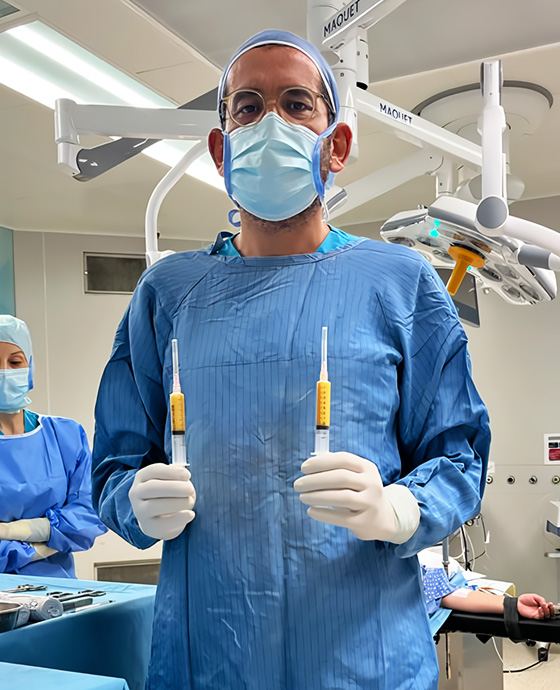
Informative Content
Make an Appointment
You can make an appointment online by filling out the contact form.




